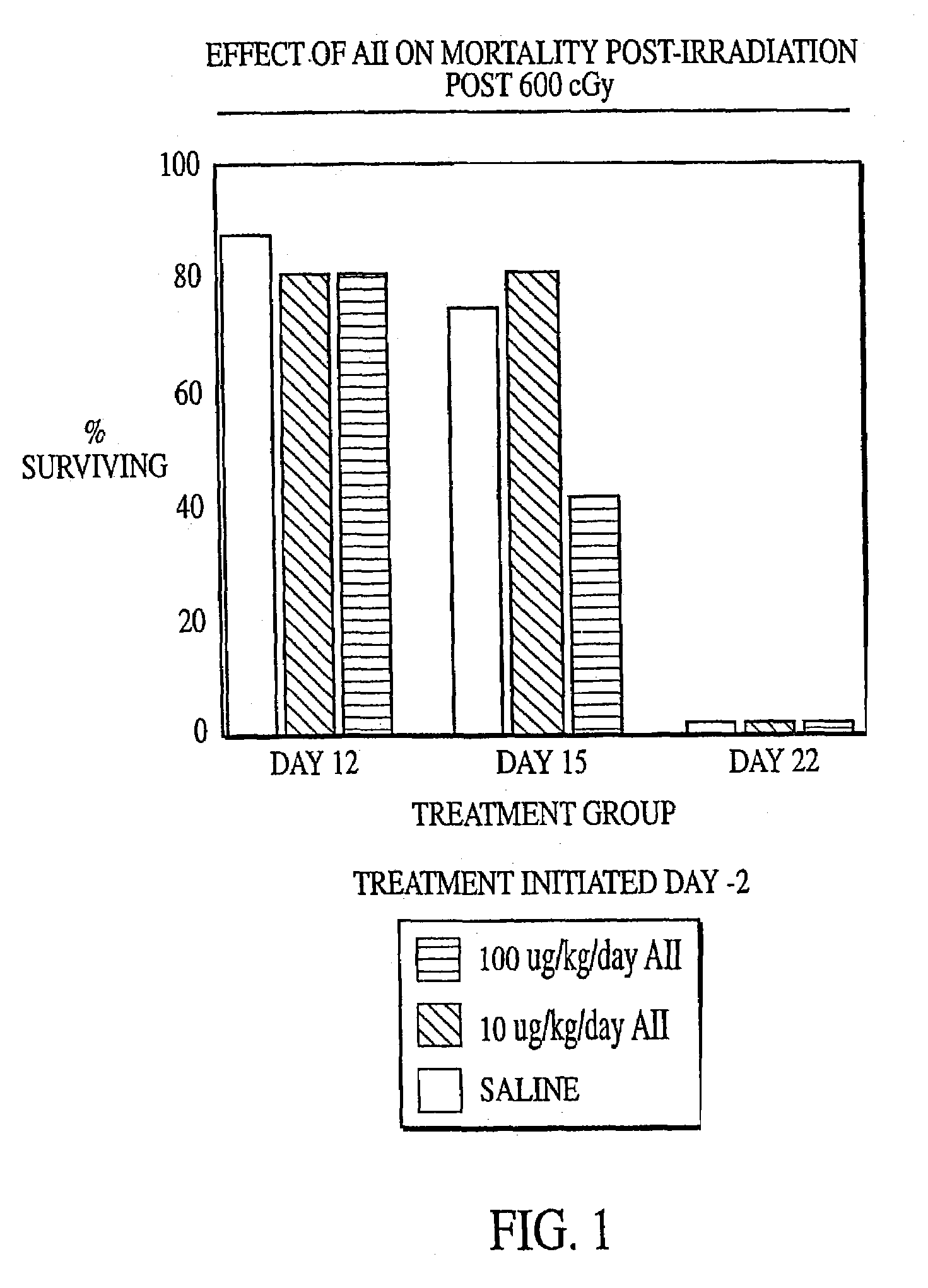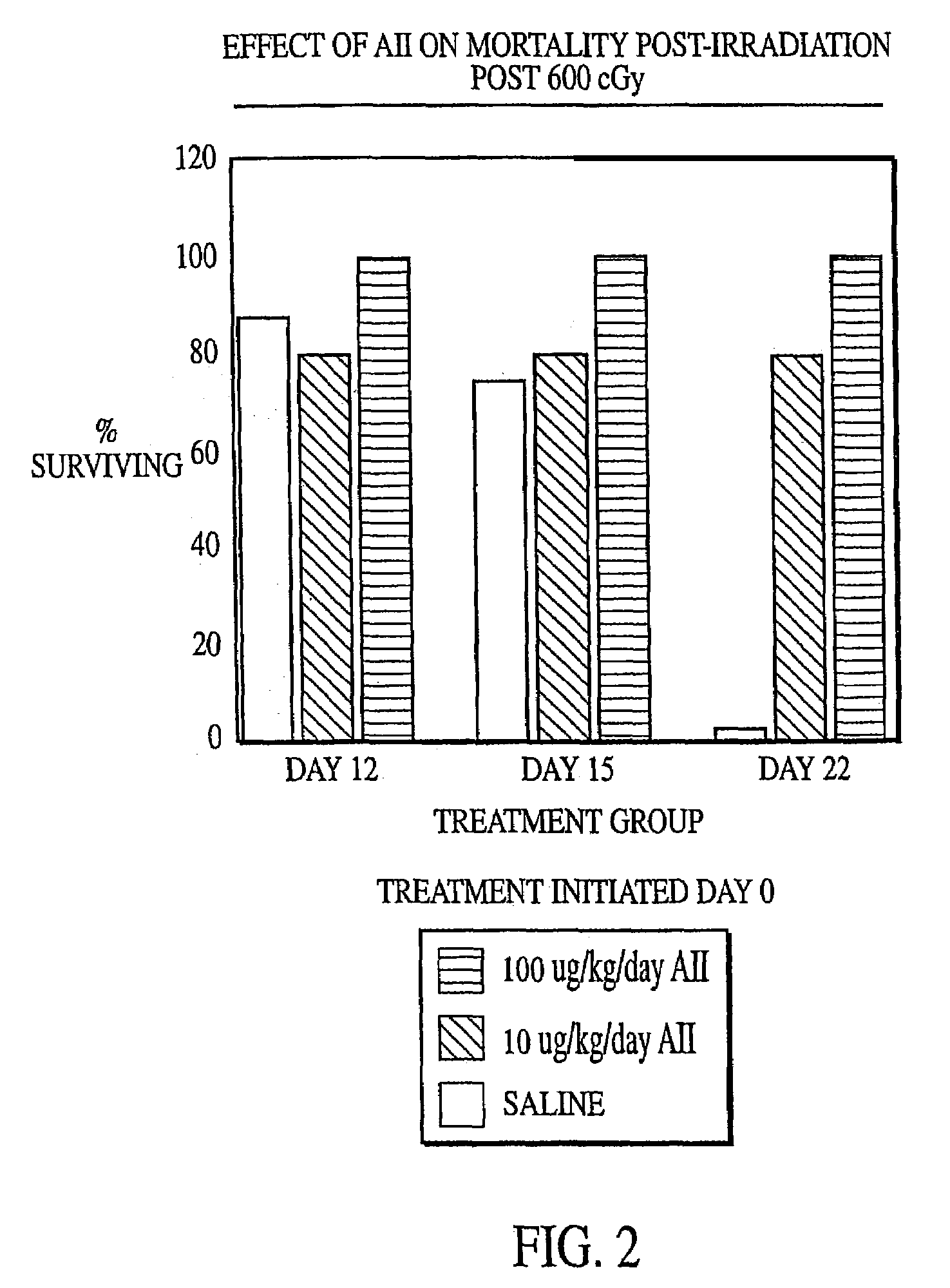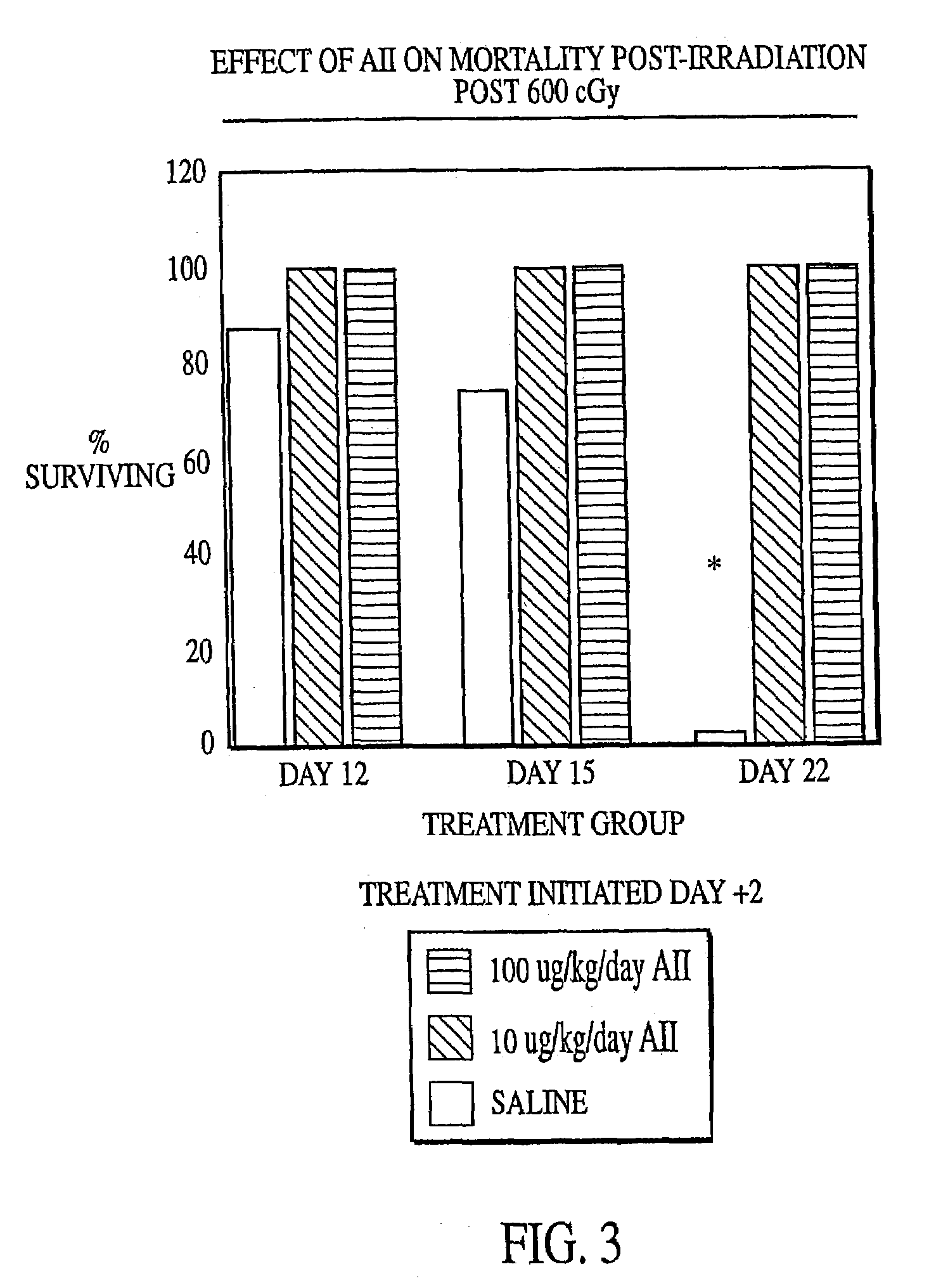Radiation therapy methods
a radiation therapy and radiation therapy technology, applied in the field of radiation therapy methods, can solve the problems of reducing compromising the overall effectiveness of treatment, and destroying the normal tissue surrounding the tumor, so as to improve the effectiveness of radiation therapy, promote megakaryocyte production and mobilization, and mitigate radiation induced tissue damage
- Summary
- Abstract
- Description
- Claims
- Application Information
AI Technical Summary
Benefits of technology
Problems solved by technology
Method used
Image
Examples
example 1
Effect of AII Ion Rat Mortality and White Blood Cell Recovery After Irradiation
[0132]Female C57B1 / 6 mice (Jackson Labs, Bar Harbor, Me.) were irradiated with 600 cGy total body irradiation. Subcutaneous injection with either AII (10 μg / kg / day or 100 μg / kg / day) or saline (placebo) was initiated two days before (−day 2), on the day of (day 0) or 2 days after (+day 2) irradiation and continued until the animals succumbed to the irradiation or were necropsied. At various times after irradiation, the mice were anaesthetized with Metofane (Pittman-Moore Animal Health, NZ) and bled via the retro-orbital sinus. Red blood cells were lysed with 0.3% acetic acid and the number of white blood cells was determined by counting with a hemacytometer. The data in FIGS. 1–3 show that administration of AII starting at two days prior to irradiation did not protect against mortality resulting from irradiation (FIG. 1), but that AII administration on the day of irradiation (FIG. 2) or two days after irra...
example 2
Effect of AII and AII Analogs / Fragments on WBC and Platelet Numbers After Irradiation
[0133]The animals were irradiated and treated as in Example 1, however, treatment started on day 0 only with one subcutaneous injection of either 10 μg / kg or 100 μg / kg daily until the study was terminated. Analogues and fragments of AII (see Table 3) were assessed for their effect on WBC recovery and platelet number after irradiation. The data are shown in FIGS. 20 and 21 and show that the peptides increase the production of both of these blood elements.
[0134]
TABLE 3Designation for Analogues / FragmentsNameAbbreviationSequenceSEQ ID NO:GSD 28Ile8-AIIDRVYIHPISEQ ID NO: 38GSD 24BPro3-AIIDRPYIHPFSEQ ID NO: 31GSD 22AAla4-AIIIRVYAHPFSEQ ID NO: 18AII(1–7)DRVYIHPSEQ ID NO: 4AIIDRVYIHPFSEQ ID NO. 1
example 3
Effect of AII on Survival of Mice Receiving Bone Marrow Transplantation After Lethal Irradiation
[0135]Donor C57B1 / 6 mice (female, 6–8 weeks old) were irradiated with 600 cGy total body irradiation. Starting on the day of irradiation, the mice received either saline (0.1 ml) or 20 μg / ml angiotensin II (0.1 ml, 100 μg / kg) subcutaneously for fourteen days. At the end of this period, the bone marrow was harvested from the femur by flushing and the number of viable nucleated cells determined by counting under a light microscope on a hemacytometer in the presence of trypan blue.
[0136]These donor bone marrow cells were then injected intravenously into recipient mice (female C57B1 / 6, 6–8 weeks old) that had been lethally irradiated (900 cGy total body irradiation) at two concentrations: 1×106 or 1×105 cells per mouse. After injection, the recipient mice received either saline or 100 μg / kg AII subcutaneously until death or termination. The study design in its entirety is as follows:
[0137]
Don...
PUM
| Property | Measurement | Unit |
|---|---|---|
| time | aaaaa | aaaaa |
| time | aaaaa | aaaaa |
| time | aaaaa | aaaaa |
Abstract
Description
Claims
Application Information
 Login to View More
Login to View More - R&D
- Intellectual Property
- Life Sciences
- Materials
- Tech Scout
- Unparalleled Data Quality
- Higher Quality Content
- 60% Fewer Hallucinations
Browse by: Latest US Patents, China's latest patents, Technical Efficacy Thesaurus, Application Domain, Technology Topic, Popular Technical Reports.
© 2025 PatSnap. All rights reserved.Legal|Privacy policy|Modern Slavery Act Transparency Statement|Sitemap|About US| Contact US: help@patsnap.com



